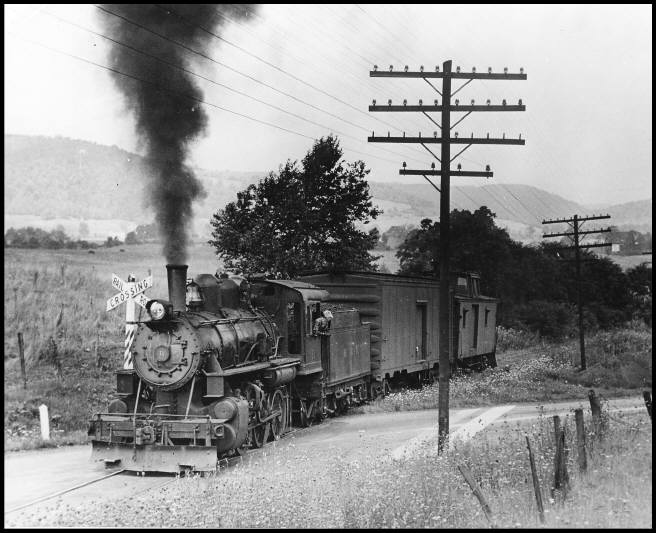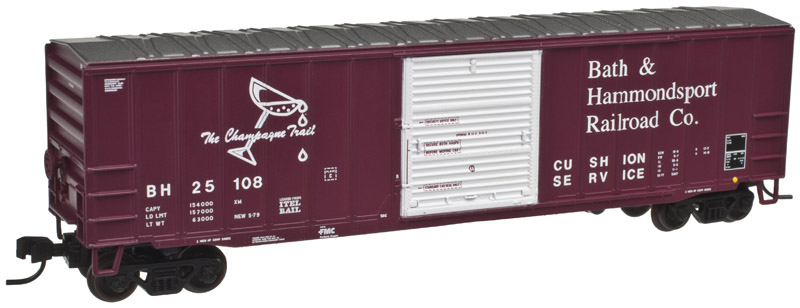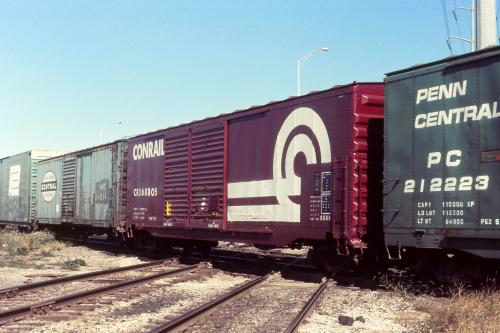Model Information: First released in 2007 in the Atlas Trainman range.
These models feature:
These models feature:
- prototypical non-terminating corrugated ends;
- diagonal paneled roof;
- single 10-foot YSD design sliding door (non-operating);
- detailed cross-member attachment rivets on the side sills;
- weighted, detailed underframes;
- true scale dimensions with accurate details;
- equipped with AccuMate knuckle couplers.
Prototype History: While the 40-foot boxcar was a standard design, and it did come in different setups depending on the type of freight being transported, it was not large enough for efficient mass commodity transportation. The 50-foot boxcar made its first appearance in the 1930s and steadily grew in popularity over the years, which further improved redundancies by allowing for even more space within a given car. Today, the 50-footer remains the common boxcar size. After the second world war ended, and steel became once again readily available, steel became the go-to choice for construction of boxcars. ACF was one of the most prolific builders of these cars.
Road Name History:  This line was built in 1872 to link Hammondsport to connections with the Erie and Delaware Lackawanna & Western in Bath, New York 9 miles away. Originally built as a 3’ gauge line, it was standard gauged in 1889. From 1903 until 1935 the B&H was controlled by the Erie but Erie applied to abandon it after the B&H suffered severe flood damage. A local group of investors stepped in, repaired the line and restored service. Freight traffic was primarily centered around the winery business and the B&H quickly picked up the nickname "The Champagne Trail." In-bound traffic included bottles and California wines for blending (in later decades, the latter was shipped by the tank car load!) Outbound traffic was primarily bottled wine. B&H also had a pair of TOFC ramps in Hammondsport. In 1976, Conrail spun off the connecting line at Bath to the County of Steuban and B&H became the designated operator. In 1996, the Livonia Avon & Lakeville took over the County owned route and the B&H. In 2001, they merged them with their Conhocton Valley Railroad subsidiary and renamed the whole thing B&H Rail. Today's B&H runs from Wayland to Painted Post, New York while the original line from Bath to Hammondsport is inactive.
This line was built in 1872 to link Hammondsport to connections with the Erie and Delaware Lackawanna & Western in Bath, New York 9 miles away. Originally built as a 3’ gauge line, it was standard gauged in 1889. From 1903 until 1935 the B&H was controlled by the Erie but Erie applied to abandon it after the B&H suffered severe flood damage. A local group of investors stepped in, repaired the line and restored service. Freight traffic was primarily centered around the winery business and the B&H quickly picked up the nickname "The Champagne Trail." In-bound traffic included bottles and California wines for blending (in later decades, the latter was shipped by the tank car load!) Outbound traffic was primarily bottled wine. B&H also had a pair of TOFC ramps in Hammondsport. In 1976, Conrail spun off the connecting line at Bath to the County of Steuban and B&H became the designated operator. In 1996, the Livonia Avon & Lakeville took over the County owned route and the B&H. In 2001, they merged them with their Conhocton Valley Railroad subsidiary and renamed the whole thing B&H Rail. Today's B&H runs from Wayland to Painted Post, New York while the original line from Bath to Hammondsport is inactive.

Brand/Importer Information: In 1924 Stephan Schaffan, Sr. founded the Atlas Tool Company in Newark, New Jersey. In 1933 his son, Stephan Schaffan, Jr., came to work for his father at the age of sixteen. Steve Jr. built model airplanes as a hobby and frequented a local hobby shop. Being an enterprising young man, he would often ask the owner if there was anything he could do to earn some extra spending money. Tired of listening to his requests, the hobby-store owner threw some model railroad track parts his way and said, "Here, see if you can improve on this".
In those days, railroad modelers had to assemble and build everything from scratch. Steve Jr. created a "switch kit" which sold so well, that the entire family worked on them in the basement at night, while doing business as usual in the machine shop during the day.
Subsequently, Steve Jr. engineered the stapling of rail to fiber track, along with inventing the first practical rail joiner and pre-assembled turnouts and flexible track. All of these products, and more, helped to popularize model railroading and assisted in the creation of a mass-market hobby. The budding entrepreneur quickly outgrew the limitations of a basement and small garage operation. Realizing they could actually make a living selling track and related products, Steve and his father had the first factory built in Hillside, New Jersey at 413 Florence Avenue in 1947. On September 30, 1949, the Atlas Tool Company was officially incorporated as a New Jersey company.
In 1985, Steve was honored posthumously for his inventions by the Model Railroad Industry Association and was inducted into the Model Railroad Industry Hall of Fame in Baltimore, Maryland. In addition, Steve was nominated and entered into the National Model Railroad Association Pioneers of Model Railroading in 1995.
In the early 1990s, the Atlas Tool Company changed its name to Atlas Model Railroad Company, Inc.
In those days, railroad modelers had to assemble and build everything from scratch. Steve Jr. created a "switch kit" which sold so well, that the entire family worked on them in the basement at night, while doing business as usual in the machine shop during the day.
Subsequently, Steve Jr. engineered the stapling of rail to fiber track, along with inventing the first practical rail joiner and pre-assembled turnouts and flexible track. All of these products, and more, helped to popularize model railroading and assisted in the creation of a mass-market hobby. The budding entrepreneur quickly outgrew the limitations of a basement and small garage operation. Realizing they could actually make a living selling track and related products, Steve and his father had the first factory built in Hillside, New Jersey at 413 Florence Avenue in 1947. On September 30, 1949, the Atlas Tool Company was officially incorporated as a New Jersey company.
In 1985, Steve was honored posthumously for his inventions by the Model Railroad Industry Association and was inducted into the Model Railroad Industry Hall of Fame in Baltimore, Maryland. In addition, Steve was nominated and entered into the National Model Railroad Association Pioneers of Model Railroading in 1995.
In the early 1990s, the Atlas Tool Company changed its name to Atlas Model Railroad Company, Inc.
Item created by: Steve German on 2016-04-14 20:59:04. Last edited by Alain LM on 2021-12-02 04:50:45
If you see errors or missing data in this entry, please feel free to log in and edit it. Anyone with a Gmail account can log in instantly.
If you see errors or missing data in this entry, please feel free to log in and edit it. Anyone with a Gmail account can log in instantly.










